Blurring the background is one of the many ways to isolate or emphasize your subject. Do you need a special lens to do so? Absolutely not! In this article, we...
Read More
How to take Sharp Photos
One of the things that makes photography frustrating is softness and blur in pictures. Sharp photos are much more appealing than soft images. It is very disappointing when you take a picture of a special moment and images come out soft/blurry or out of focus. So, in this article, I will go through the techniques I use to make sure that my images always come out tack sharp.
Let’s start with the reasons why an image might come out blurry:
- A long shutter speed can capture camera shake, which would produce a blurry image
- Your subject could be moving and causing motion blur, made worse by a long shutter speed
- Poor focus acquisition would result in a soft image
- You might have a bad lens or a lens that is not capable of producing sharp photos
- Your ISO could be set to a very high number, resulting in lots of noise and loss of detail
In order to resolve these issues, you need to address them all at the same time, which will help achieve optimal sharpness. There are a few other causes of blurry photos, too, which I will cover below.

Table of Contents
- How to Take Sharp Pictures
- Set the Right ISO
- Use the Hand-Holding Rule
- Choose Your Camera Mode Wisely
- Pick a Fast Enough Shutter Speed
- Use High ISO in Dark Environments
- Enable Auto ISO
- Hold Your Camera Steady
- Focus Carefully on Your Subject
- Reduce Motion Blur in Your Subject
- Turn On Vibration Reduction
- Use a Faster Lens
- Use Depth of Field Strategically
- Pick a Sharp Aperture
- Clean Your Lenses!
- Use a Tripod in Low Light
- Shoot a Burst of Photos
How to Take Sharp Pictures
1. Set the Right ISO
Start with setting your camera to the lowest ISO “base” value (in my Nikon camera it is ISO 200). Remember that the camera base ISO will produce the highest quality images with maximum sharpness. The higher the ISO (sensor sensitivity), the more noise you will see in the image. I suggest reading my article on understanding ISO.
2. Use the Hand-Holding Rule
If you have a zoom lens that goes beyond 100mm, I would recommend applying the general hand-holding “rule”, which states that the shutter speed should be equivalent to the focal length set on the lens, or faster. For example, if you have your lens zoomed at 125mm, your shutter speed should be at least 1/125 of a second.
Keep in mind that this rule applied to 35mm film and digital cameras, so if you own an entry-level DSLR or mirrorless camera with a crop factor (not full frame), you need to do the math accordingly. For Nikon cameras with a 1.5x crop factor, just multiply the result by 1.5, whereas for Canon cameras, multiply by 1.6. If you have a zoom lens such as the 18-135mm (for Nikon DX sensors), set the “Minimum Shutter Speed” to the longest focal range of the lens (135mm), which is 1/200 of a second. Here are some examples:
- 50mm on Nikon DX (D3500/D5600/D7500): 1/75 (50mm x 1.5)
- 100mm on Nikon DX (D3500/D5600/D7500): 1/150 (100mm x 1.5)
- 150mm on Nikon DX (D3500/D5600/D7500): 1/225 (150mm x 1.5)
- 200mm on Nikon DX (D3500/D5600/D7500): 1/300 (200mm x 1.5)
- 300mm on Nikon DX (D3500/D5600/D7500): 1/450 (300mm x 1.5)
Remember that this only affects blur from camera shake. If you are taking pictures of a fast moving subject, you very well may need a quicker shutter speed than this in order to get a sharp picture.
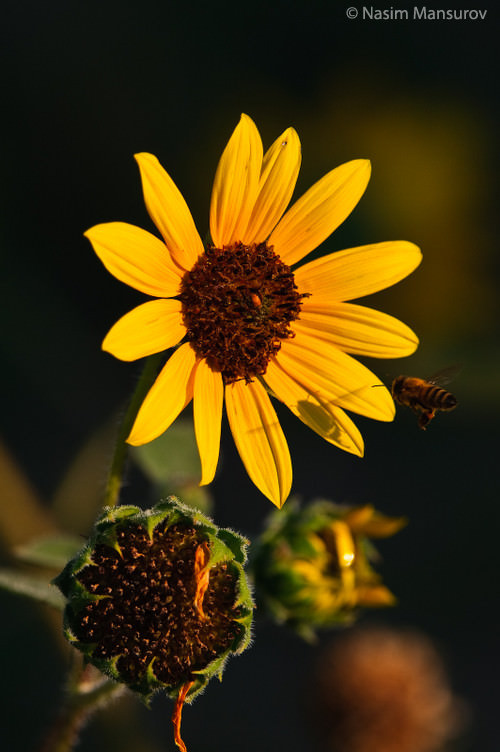
3. Choose Your Camera Mode Wisely
When I’m taking pictures in low light, 99% of the time, I shoot in Aperture-Priority mode and set aperture to the widest setting on my lens – the maximum aperture, AKA the smallest f-number. This is usually in the range of f/1.4 to f/5.6 depending on the lens. (For example, with the Nikon 35mm f/1.8 lens, I will set the aperture to its maximum value of f/1.8.) The camera automatically meters the scene and guesses what the shutter speed should be to properly expose the image. You can easily adjust the camera’s guess with exposure compensation. So, set your camera to aperture-priority mode and set the aperture to the lowest possible f-number.
Set your metering to “Matrix” on Nikon or “Evaluative” on Canon, so that the whole scene is assessed to estimate the correct shutter speed.
4. Pick a Fast Enough Shutter Speed
After you set your camera to aperture priority and pick the right metering mode, point it at the subject that you want to photograph and half-press the shutter. Doing so should show you the shutter speed on the bottom of the viewfinder.
- If the shutter speed is showing 1/100 or faster, you should be good to go, unless anything in your photo is moving quickly (or if you’re using a long telephoto lens; remember the hand-holding rule). Snap an image or two and see if you are getting any blur in your image. I typically review my images on the back of the camera at 100% and make sure that nothing is blurry. If anything in your photo is blurry – the entire image, or just one fast-moving subject – use a quicker shutter speed like 1/200 or 1/500 second.
- On the other hand, if the shutter speed is below 1/100, it might mean you simply do not have enough light. If you are indoors, opening up windows to let some light in or turning the lights on will help to increase your shutter speed. It is still possible to capture sharp photos faster than 1/100 second handheld, but it becomes increasingly more difficult the longer your shutter speed is.
5. Use High ISO in Dark Environments
If you are still getting blurry images, try to hold the camera steady without shaking it too much and take another picture. If that doesn’t help, set a fast enough shutter speed to capture sharp photos, and raise your ISO instead. You can do this via Auto ISO (described in the next section) or manually increasing ISO. In dark environments, it is not unusual to use quite a high ISO in order to get a fast enough shutter speed. Although this adds more noise/grain to a photo, that is usually better than capturing a blurry image.

6. Enable Auto ISO
Many cameras today have an “Auto ISO” feature that is very useful for capturing sharp pictures. So, set it to “On.” Set your Maximum Sensitivity to ISO 1600.
If you have the option to select a minimum shutter speed, set it to “Auto” as well, which automatically applies the hand-holding rule! If you don’t have this option, set “Minimum shutter speed” to 1/100 second.
This is a useful feature because, if the amount of light entering the lens decreases and the shutter speed goes below 1/100 of a second, the camera automatically increases ISO to keep the shutter speed above 1/100 of a second, or above the hand-holding rule.
If you have shaky hands, I would recommend bumping up the “Minimum shutter speed” to something like 1/200-1/250. Or if you have the “Auto” minimum shutter speed option, prioritize it toward “faster” just to be on the safe side. Also see our separate article on how to hand-hold a camera as stable as possible.
Some cameras don’t have an Auto ISO feature. In that case, you will have to adjust ISO manually to do the same thing. Just raise your ISO in darker environments to keep your shutter speed at a reasonable level. I don’t recommend raising the ISO above ISO 1600 or perhaps ISO 3200. Why not? Quite simply, anything higher than that in an entry-level DSLRs produces too much noise, which has a negative impact on overall image quality. On older-generation DSLRs such as Nikon D90/D200/D3000/D5000, you might want to keep the maximum ISO to 800.
7. Hold Your Camera Steady
While hand-holding your camera, there is a direct correlation between the camera shutter speed and blurry images. The longer the shutter speed (especially below 1/100 of a second), the higher the chance for blurrier images. Why? Because while hand-holding a camera, factors such as your stance, breathing, camera hand-holding technique all play a huge role in stabilizing the camera and producing shake-free images.
Think of it as holding a rifle on your hand. You wouldn’t want to move around while trying to shoot – you need to stand as steady and stable as possible, pull the stock tightly into the shoulder, exhale, and then shoot. The same technique works great for your photography, especially when you have to deal with slow shutter speeds.
I recommend holding the camera just like you would hold a rifle (except your right hand goes on the shutter instead of the trigger), with one of your legs on the front and your body balance spread across both legs. I personally exhale when I shoot long shutter speeds handheld, like 1/10 second, and it does help me to get sharper images. Try it and see how it works for you. The difference between shooting a camera versus a rifle, is that you can at least adjust the shutter speed to a higher number and avoid camera shake, whereas you cannot do the same on a gun.
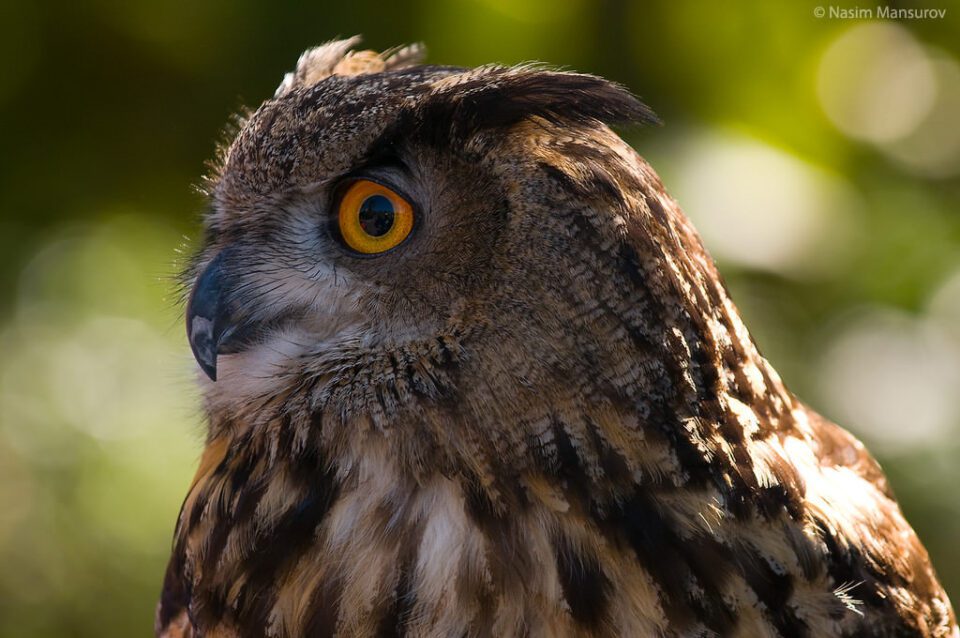
8. Focus Carefully on Your Subject
Learn how to focus correctly and deal with focusing issues. This one is very important, as your camera focus directly impacts image sharpness. The first thing you need to learn is how to differentiate between a camera shake/motion blur and a focus problem.
If the subject in your image is blurry, but something closer to the camera or farther away is perfectly in focus and sharp, it is most likely a focus issue. If the whole image is blurry and nothing is sharp, it is generally due to using too long of a shutter speed handheld. And lastly, if a fast-moving object in your photo is blurry/streaky in the direction of travel, then your shutter speed is not fast enough to eliminate subject motion. That isn’t a focus problem; use a faster shutter speed.
If you are having problems acquiring a good focus, here are some things that I recommend for you:
- Lack of light can cause auto-focus malfunction, resulting in inaccurate focus acquisition by the camera. Make sure there is plenty of light for your camera to properly focus.
- The center focus point is generally the most accurate in cameras. If you are having problems acquiring focus because your focus point is elsewhere, I recommend moving it back to the center, focusing, and recomposing.
- Many cameras let you select a separate button for focusing, without touching the shutter release button. I set my camera this way, focusing exclusively with my thumb, while pushing the shutter trigger with my index finger. This is known as back-button focusing. It takes some time to get used to back-button focusing if you’re familiar with half pressing the shutter button instead. However, you may find it useful once you try it out.
- The camera autofocus system works by looking at the contrast around the focus area. For example, if you try to focus your camera on a clean white wall, it will never be able to acquire focus, because the camera will not see any areas of contrast. On the other hand, if you have a white wall with a dark object on it and you put your focus point in between the wall and the object, your camera will instantly acquire correct focus. My recommendation is to place the rectangular focus point on an area with the most contrast. Examples are: edges of objects, lines separating different colors, numbers and letters printed on objects, etc.
- Focus multiple times until you can clearly see in the viewfinder that the object is in focus. For this one, you need to have a good viewfinder and a good vision. Some entry-level DSLRs have a very small viewfinder, making it hard or sometimes even impossible to see if you are getting correct focus. Unfortunately, there is not much you can do if you cannot tell if the subject is in focus by looking into the viewfinder, so just take multiple pictures while constantly re-adjusting the focus and review images on the camera LCD.
9. Reduce Motion Blur in Your Subject
If you are photographing a person, tell them to freeze and not move while you take their picture. When you work with slow shutter speeds, even if you do everything right, your images might still come out blurry just because your subject moved while the shutter was open. This is called motion blur. Sometimes people like the effect of the motion blur, especially for high-speed objects like cars. To reproduce this effect on your camera, set your camera to Shutter-Priority mode, then set your shutter to 1/100 of a second or less. Ask your subject to move his/her hand quickly, while not moving the body. The result should be a sharp picture of the person’s body, while having a motion blur on his/her hand.
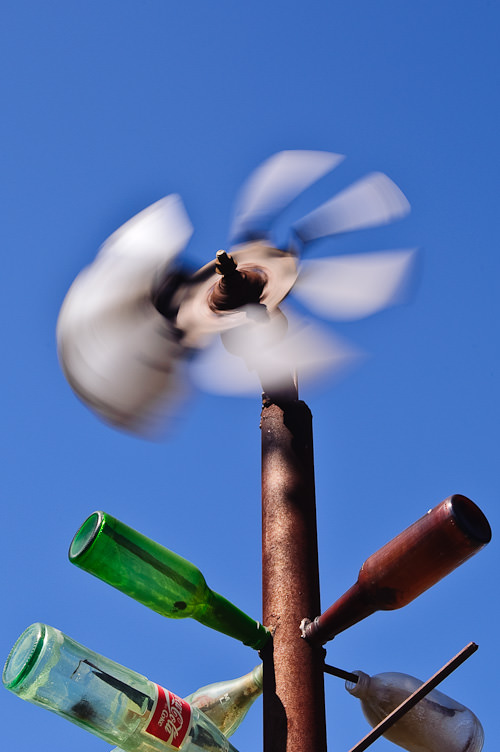
As you can see from the above image, everything in the image is sharp, while the fan is blurred through motion blur, which I specifically created by shooting the image in low shutter speed of 1/20 of a second (the image was shot hand-held).
Here is another example of motion blur that I shot at night on a tripod (shutter speed is 2 seconds):
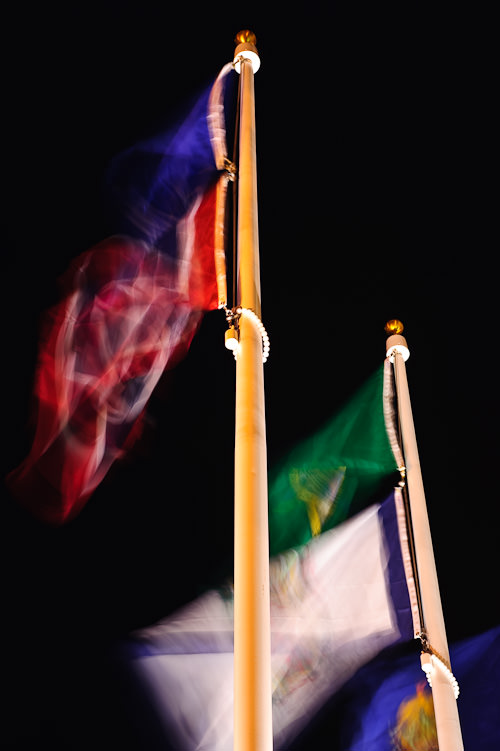
So, if you want motion blur, use a long shutter speed like 1/10 second or even several seconds (if you’re using a tripod). But you’ll usually want to avoid motion blur when taking pictures of people or action, so make sure to use a fast enough shutter speed. The hand-holding rule doesn’t apply if your subject is moving very quickly, because it is all about eliminating camera shake blur, not motion blur from your subject. For photos of hummingbirds, for example, I might set 1/1000 second or 1/2000 second and still get some blur in the wings!
10. Turn On Vibration Reduction
Make sure that your vibration reduction (VR on Nikon) or image stabilization (IS on Canon) is set to “On” on your lens, if you have it. Many of the consumer zoom lenses have some sort of anti-shake/vibration reduction technology in them, allowing one to shoot at lower shutter speeds and still get sharp images. If you have one of those lenses, go ahead and try lowering your shutter speed to a lower value. You can even lower down the “minimum shutter speed” in your Auto ISO settings to something like 1/50 of a second and still get sharp images.
11. Use a Faster Lens
Get a good fast prime lens such as the Nikon 35mm f/1.8 DX or 50mm f/1.4 / f/1.8 lenses. These prime lenses are relatively inexpensive, ranging between $200 to $400 for the f/1.4 model.
Very few zoom lenses can achieve the same optical quality as the prime lenses, because prime lenses have simpler design and are optimized to perform for only one focal range. Although you lose the ability to zoom in and out, prime lenses are much faster than most zoom lenses and are excellent choices for low-light and portrait photography.
Because of the shallow depth of field, prime lenses are also capable of producing pictures with beautiful bokeh (nicely blurred backgrounds). When I got my hands on my first prime lens, I just could not believe how much of a difference it made in terms of sharpness. If you have never used a prime lens before, give it a try and you will not regret it.
12. Use Depth of Field Strategically
When photographing people or animals, always focus on the closest eye to you. This is very important, especially when dealing with large apertures between f/1.4 and f/2.8, because your depth of field will be very shallow. As long as the eye of the subject is sharp, the image will most likely be acceptable. Take a look at this photograph of my son Ozzy:

Normally, I delete images like this, but I’m glad I kept it for this article. As you can see from the above image, I failed to acquire correct focus on Ozzy’s eye and somehow focused on his hair instead. Now, compare it to this image:

Such a big difference between the two. The second image looks much sharper, although I was using the same camera settings.
13. Pick a Sharp Aperture
Aperture also plays a role in achieving optimal sharpness. For landscape photography, I mostly use apertures between f/8 and f/11, while for portraits, I use apertures of f/1.4 to f/8, depending on what I want to do with the background. Most lenses are sharpest between f/5.6 and f/8, so if you are shooting during a bright sunny day, try setting your aperture to a number between f/4 and f/8 and see if it makes a difference. Just keep in mind that playing with aperture changes the depth of field and will have an impact on the lens bokeh, which are usually more important than the sharpness effects.
14. Clean Your Lenses!
An amateur photographer approached me once and asked for advice on what he could do to bring more contrast and sharpness to his images. When I saw the front element of his lens, I immediately made a suggestion to clean his lens. It was so dirty that I couldn’t believe he was still able to take pictures. A dirty and a greasy front element of the lens is a guarantee to inaccurate camera focusing and poor image contrast. If you don’t know how to do it properly, check out my article on how to clean DSLR lenses.
15. Use a Tripod in Low Light
Get a tripod for low-light situations (see my article on how to choose a tripod). For shooting lightning storms, fireworks, city lights, and other cool stuff at night, a sturdy tripod is a must! Don’t buy a cheap tripod designed for point and shoot cameras, but rather invest in a heavy duty, sturdy tripod that can handle your DSLR or advanced mirrorless camera. Having a self-timer mode or a cable/wireless shutter release is also very helpful to minimize camera shake. The below image would not be possible to capture without a tripod, since I took it at a shutter speed of five seconds:
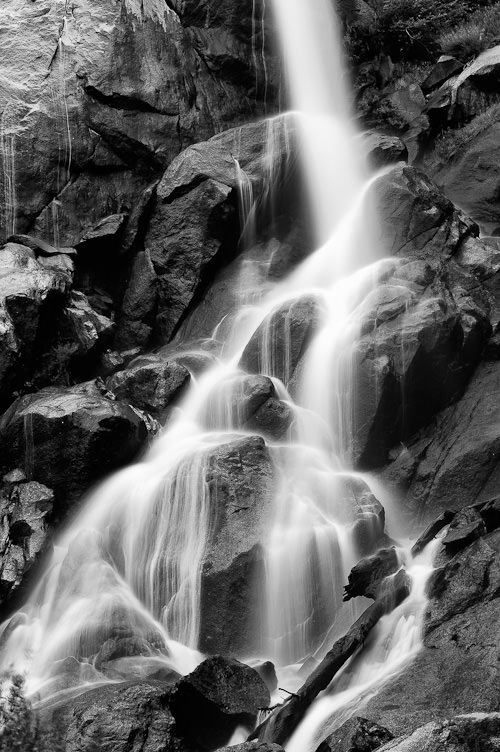
16. Shoot a Burst of Photos
Set your camera to a “continuous shooting” mode (also known as burst mode), then photograph your subject in bursts by just holding the shutter button. Especially if you are photographing a moving subject like children, burst mode helps improve the odds that you’ll get a shot that is spot-on. With most cameras today, you can fire off at least 3 photos per second, and often more like 4 or 5. With a bit of panning to follow along with your subject, you can get sharp photos even when your subject doesn’t stay still!
Sometimes, you’ll get just enough of the face (of say a happily-running kid) in focus then everything else gets blurred because of the motion, leaving you with a nice isolation that highlights the emotion of that moment. This valuable tip was provided by our reader Eric.
more on Shoot Sessions
How to take Good Pictures
One of the questions that I continuously get from some of my friends and blog readers that just got into photography is “How can I take good pictures with what...
Read MoreHow to take Sharp Photos
One of the things that makes photography frustrating is softness and blur in pictures. Sharp photos are much more appealing than soft images. It is very disappointing when you take a picture...
Read More

